50+ Epic Generative AI Statistics
17 min. read
Updated on
Read our disclosure page to find out how can you help MSPoweruser sustain the editorial team Read more
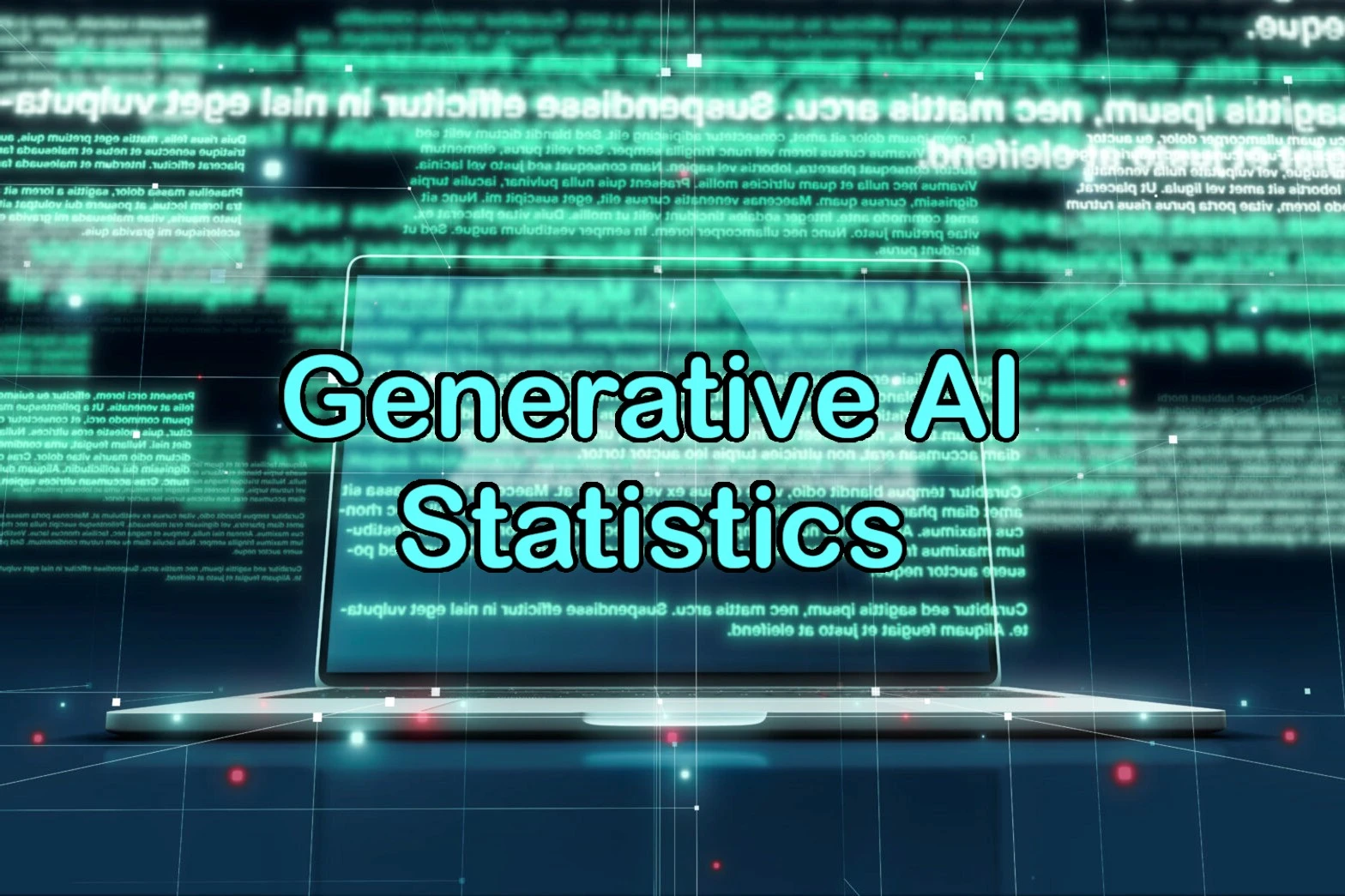
Generative AI is a type of artificial intelligence that can generate unique text, images, or other media by learning patterns from existing data. It can do so without explicit instructions.
The rise of ChatGPT and other AI tools that let you enter simple prompts has exploded among the general public and is revolutionizing the way we create written content, art, and code.
But what does the data say about this remarkable technology? These generative AI statistics explore its growth and value, how it’s being used, and society’s attitudes toward it.
Key Generative AI Statistics
Buckle in, as here are the most important generative AI statistics everyone should know!
- The generative AI market is estimated to reach $1.3 trillion by 2032.
- OpenAI is the biggest generative AI company by value and users.
- More than 60% of companies use generative AI in the workplace.
- 12% of US adults have used ChatGPT to generate text.
- 30% of outbound marketing messages from large organizations will be AI-generated.
- Generative AI will reduce workload by 60% to 70%.
Generative AI Usage Statistics
How many people use generative AI and what do they use it for? These fascinating stats explore how it’s being adopted, user demos, and more.
1. More than 60% of companies use generative AI in the workplace.
(Source: Jasper AI)
Approximately 61.5% of companies with 11-1000 employees are using generative AI in the workplace. 46.1% of those that have implemented it use it more than once a week. Just under 33% use it every day.
2. Over 50% of business leaders have implemented generative AI specifically for content marketing.
(Source: SiegeMedia)
52% of surveyed business leaders say they have implemented generative AI tools like ChatGPT to help generate marketing content. 64.7% plan to try it by the end of 2023.
3. 12% of US adults have used ChatGPT to generate text content.
(Source: Statista – ChatGPT Usage)
Generative AI is so popular that as of January 2023, 12% of US adults have used ChatGPT to generate text themselves, while a further 38% have seen others use it. That means half have been exposed to the technology.
4. 26% of people in the UK have used generative AI.
(Source: Deloitte)
Usage in the UK is higher than in the US, with 52% having heard of generative AI and 26% trying it at least once. 28% of those that have used it do so on a weekly basis and 9% use it every single day. 30% only tried it once.
5. 1 in 3 US college students use ChatGPT for homework assignments.
(Source: Intelligent.com)
The human language model makes ChatGPT easy for answering questions and writing schoolwork. Survey data reveals up to 33% of US college students use generative AI for their homework tasks. 60% of students that admit to using ChatGPT say they use it on more than half of all assignments.
6. More than half of UK college students have used AI in education.
(Source: Deloitte)
In the UK, 56% of 16 to 19-year-old school or college-age students have used generative AI for education assignments.
7. The marketing and advertising industry has the highest generative AI adoption rate.
(Source: Statista – AI Adoption)
As of 2022, US marketing and advertising firms had used generative AI the most based on a survey of professionals from all industries. Professionals involved in tech had the second highest adoption rate (35%), followed by consulting (30%).
Despite healthcare having a lot of AI applications, it has not been a high adopter of generative AI specifically. It bottomed the list with a 15% rate of adoption.
8. Around 86% percent of healthcare providers, life science companies, and tech vendors use AI.
(Source: Healthcare IT News)
Despite such a high rate of adoption, many of these industries came before generative AI. In fact, healthcare has been an early adopter of other artificial intelligence technologies. However, it is expected to grow rapidly in the coming years with generative AI assistants.
9. No one age group uses generative AI significantly more than the others.
(Source: Statista – AI Age)
In the United States, different generations use AI about the same amount. 29% of the younger Gen Z have used it, but 28% of Gen X, and 27% of Millennials have tried it too.
10. Urban populations are 15% more exposed to generative AI than rural populations.
(Source: Santander)
35% of the urban population is exposed to AI compared to 20% of the rural population. This follows the same trajectory as other technologies.
Historical Generative AI Statistics
The following generative AI stats and facts look back at the history and milestones of the technology.
11. Early generative AI was first developed in the 1960s.
(Source: Forbes)
ELIZA was one of the earliest generative chatbots developed in the 1960s by Joseph Weizenbaum, a computer scientist at MIT. ELIZA was designed to simulate a conversation between a user and a psychotherapist, using a simplified pattern-matching approach.
This worked by recognizing keywords and phrases in the user’s input and generating pre-programmed responses based on those patterns. However, it was not really a learning model.
12. Generative AI leaped forward in 2014 with the introduction of generative adversarial networks.
(Source: Tech Target)
Generative Adversarial Networks (GANs) were introduced in 2014 by Ian Goodfellow. The process trains two neural networks at the same time, one known as the generator and the other as the discriminator. The generator creates synthetic data while the discriminator’s job is to distinguish between real and generated data.
During the training process, the generator attempts to produce increasingly realistic data that can fool the discriminator, while the discriminator learns to differentiate better between real and fake data.
13. In 2016, DeepMind’s WaveNet was an important milestone for audio generative AI.
(Source: The Verge)
WaveNet was able to generate human-like speech, which gave birth to advanced AI voice assistants and the highly accurate text-to-speech synthesis tools we see today.
14. In 2017, NVIDIA developed progressive GANs for photo-realistic image generation.
(Source: NVIDIA)
NVIDIA’s GANs were able to generate images with detail and clarity never seen before by exponentially adding new layers while training on its data. This created high-detail and high-resolution images that we now see from multiple AI image generators.
15. Open AI developed the first Generative Pre-trained Transformer (GPT) in 2018.
(Source: WEF)
The GPT in ChatGPT refers to ‘Generative Pre-trained Transformer’ which was introduced by OpenAI in their paper titled “Improving Language Understanding by Generative Pre-training.”
The model is pre-trained on 570 gigabytes of text across 175 billion parameters, allowing it to learn the underlying patterns and structures of language. After, it’s fine-tuned on text classification, language translation, question-answering, etc.
16. GPT-3 cost $3.2 million in computer resources to be trained.
(Source: Santander)
Learning from all that data isn’t free. The third incarnation of GPT is estimated to have consumed $3.2 million worth of computer power and resources. After launch, ChatGPT cost $700,000 a day to run.
17. AI art emerged in 2021 with the release of DALL-E.
(Source: Arimetrics)
OpenAI’s DALL-E, which is a play on artist Salvador Dali, applied pre-trained transformers to pixel generation rather than text. This allowed for high-quality AI art to be generated from natural language prompts. DALL-E was soon followed by Midjourney and Stable Diffusion.
18. GhatGPT surpassed one million users in less than a week.
(Source: Reuters)
ChatGPT CEO Sam Altman announced on Twitter that its public release in November 2022 surpassed a million users within a week. To illustrate this meteoric rise, Twitter itself wasn’t that popular until 2 years after its launch.
19. Bard lost Google $100 billion in stock value after it was showcased in February 2023.
(Source: Wallstreet Journal)
Not all generative AI tools kick off with a bang. Bard, which is Google’s rival to ChatGPT caused the corporation’s stock to tumble 8% after it was showcased via livestream in February 2023 and generated an inaccurate answer.
20. In May 2023 Claude was able to process an average novel in one minute.
(Source: McKinsey)
Anthropic’s generative AI, Claude, started out with the ability to process 9,000 tokens of text in March 2023. Two months later it surpassed 100,000 tokens, equal to about 75,000 words a minute or one average novel.
Financial Generative AI Statistics
These financial stats look at generative AI market share, the money being made, and the value of the leading companies.
21. The generative AI market is estimated to reach $1.3 trillion by 2032.
(Source: Bloomberg)
In 2022, the generative AI market was worth approximately $40 billion. Recent analysis suggests it could increase at a compound annual growth rate (CAGR) of 42%, reaching $1.3 trillion by the end of the next decade.
Furthermore, generative AI software products could add about $280 billion to the global software market.
22. Generative AI could add the equivalent of $2.6 trillion to $4.4 trillion to the global economy.
(Source: McKinsey)
The extra productivity attributed to generative AI could add between $2.6 trillion to $4.4 trillion to the global economy every year. 75% of this value spans Customer operations, marketing and sales, software engineering, and R&D.
23. North America is the leading generative AI market by region.
(Sources: Precedence Research, Statista – AI US)
North America is the market leader by region, accounting for 41% revenue share in 2022. This amounted to just below $10 billion. It was followed by Europe (26%), Asia-Pacific (22%), Latin America (8%), and Middle-East/Africa (3%).
24. In 2022, the media and entertainment segment held 34% of the global generative AI market.
(Sources: Precedence Research)

The media and entertainment segment exceeded $1.5 billion and held a 34% revenue share in 2022. This was attributed to generative AI advertisement campaigns. During the next decade, the business and financial services segment is expected to grow at the fastest rate of 36.4%.
25. OpenAI is the biggest generative AI company by value and users.
(Sources: Reuters 2-3, SimilarWeb 1-2, DailyAlts)
OpenAI is the company behind the popular AI chatbot ChatGPT and image generator DALL-E. It is currently the most successful generative AI company in the world, having been valued at between $27 billion and $29 billion in April 2023.
It also had more than 1.7 billion users in June 2023. By comparison, Google Bard had approximately 140 million users and at times has lost the corporation money.
Anthropic, an AI company last valued at $4.1 billion, recently launched its second generative chatbot model Claude 2. However, its user base is much smaller than ChatGPT.
26. Generative AI art platform Stable Diffusion is worth more than $1 billion.
(Sources: Forbes 2, iNews)
AI generators can create images and artwork not just text responses. Stable Diffusion is currently the leading image generator with over 10 million users a day and a value of more than $1 billion. Its closest rival is OpenAI’s own DALL-E image generator, though this is behind a paywall.
The AI art market is difficult to quantify. However, the highest-valued AI-generated NFT sold for $1.1 million, and other regular AI art pieces have sold for hundreds of thousands at auction.
27. $1.7 billion in venture capital has been raised for non-ChatGPT AI solutions.
(Source: Gartner)
Everyone knows about ChatGPT, but venture capitalists have funded more than $1.7 billion in generative AI technology since 2020, with the discovery of new drugs and software coding getting the most investment.
28. Generative AI software is expected to be worth $3.7 billion by the end of 2023.
(Source: S&P Global)
Based on 263 generative AI software companies, the generative AI software market is estimated to be worth approximately $3.7 billion by the end of 2023.
29. Code generators are the fastest-growing generative AI tools.
(Source: S&P Global)
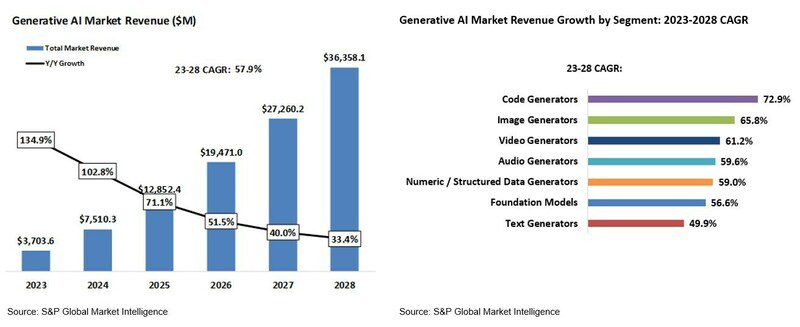
While general chatbots are currently the most used form of generative AI, bots that can generate computer code are expected to have the fastest rate of growth over the next 5 years. It’s estimated that code generators will have a compound annual growth rate of 72.9%.
AI image generators are the second fastest-growing type of generative AI, with a 65.8% CAGR.
30. Australia’s healthcare sector could get $13 billion in value from adopting generative AI.
(Source: Microsoft)
Research by Microsoft suggests the adoption of patient wearables, AI-driven diagnostics, and the time saved by automating administrative tasks, could add between $5 billion and $13 billion in value to Australia’s healthcare industry.
Attitudes Towards Generative AI Statistics
The following stats and opinions explore how professionals and the public feel about the rise of generative AI.
31. Nearly 100% of global executives believe AI will be important to their strategies.
(Source: Accenture)
98% of executives polled from across the globe say AI will serve a key role in their company’s strategy over the next 3 to 5 years.
32. Men have more trust in generative AI than women.
(Source: Insider Intelligence)
Of US adults surveyed, those who strongly trust generative AI skew 60% men to 40% women. Meanwhile, those who expressed strong distrust were 53% female to 47% male.
33. ChatGPT has a 60/40 split between men and women.
(Source: SimilarWeb)
As of June 2023, ChatGPT’s web traffic is 59.69% male to 40.31% female. It seems men both use and trust AI more than women.
34. 68.4% of tech professionals do not believe their jobs are at risk due to generative AI.
(Source: Jasper AI)
In a survey of 500 tech professionals in 12 departments, 68.4% did not feel like generative AI tools put their jobs at risk. Moreover, 73% of all respondents believe such tools are safe and ethical.
35. 82% of employees worry hackers are using generative AI to create scam emails.
(Source: IT Pro)
Research in 2023 found a huge surge in the number of new social engineering-based email attacks, which correlated with the rise of generative AI bots. Because of this, 82% of employees said that AI-generated scam emails were a worry at work.
36. Over 50% of US adults fear AI-generated text content may be inaccurate or misleading.
(Source: Insider Intelligence 2)
Although the majority agree that generative AI can save time and money in the workplace, 56% of survey respondents strongly agreed or somewhat agreed that its written content could contain biases and inaccuracies.
This can range from getting information completely wrong, bad grammar, or the fact that tools like ChatGPT have not been trained on real world data beyond September 2021.
37. 43% of UK generative AI users believe it always tells the truth.
(Source: Telecoms)
In the UK, 43% of regular generative AI users have trust that it always generates factually accurate answers, compared to only 19% of people who haven’t use AI yet,
38. The majority agree that accuracy will improve over time.
(Source: Jasper AI)
Despite current fears of inaccuracies, as high as 83% expect AI models to improve their results as time goes on, which is a native function of machine learning.
39. 75% of Americans are concerned about deepfakes.
(Source: MITRE-Harris)
Even more of a concern is that the quality of AI-generated photos, videos, and audio is so good, it can fool people into thinking it’s real. So-called deepfakes take the likeness of a real person such as a celebrity or politician and use AI to get them to do and say anything the creator wants.
This raises a number of issues around propaganda, fake news, privacy, and copyright infringement.
40. 88% of marketers save time and money with Generative AI.
(Source: Insider Intelligence 3)
The vast majority of marketers say generative AI is making their company more efficient and cost-effective. 88% also believe AI content can be as good or even better than what humans produce.
The Future of Generative AI
These generative AI statistics explore the market’s growth and predictions for the future.
41. Generative AI will reduce workload by 60% to 70%.
(Sources: McKinsey, Accenture)
By automating repetitive tasks and augmenting more complex tasks, generative AI has the potential to reduce the average worker’s current workload by 60% to 70%. This equates to 40% of all working hours in the day.
While such figures create fear of AI job replacements, it could also free up time for more important tasks that AI cannot automate.
42. Office and administrative jobs are most at risk of automation.
(Source: Goldman Sachs)
Research suggests administrative, repetitive, and data-based tasks are at the highest risk of being replaced by generative AI.
In terms of roles, 46% of office and administrative support jobs will be automated. This is followed by the legal profession (44%), and architecture and engineering (37%).
Although manual labor could face further automation by robotics, it is the least impacted by generative forms of AI.
43. Generative AI will impact female workers more than men.
(Source: Kenan Institute)
A recent study found that 80% of women are in occupations that are highly exposed to automation by generative AI. These are positions where at least a quarter of tasks can be done by AI.
Only 60% of men are in similar roles, meaning AI could displace more women than men from their jobs.
44. Generative AI will contribute to a potential 3.3% annual increase in labor productivity.
(Source: McKinsey)
Generative AI, other forms of AI, and other automation technologies will combine to produce an increase of 0.2% to 3.3% of labor productivity each year. This growth is expected to be consistent through 2040.
45. The banking sector will see a more than 2.8% boost in productivity.
(Source: McKinsey)
Generative AI is a great prospect for the banking industry. It’s predicted to increase productivity between 2.8% to 4.7% based on the sector’s annual income.
46. Problem-solving can be solved 15% faster in customer service due to AI.
(Source: NBER)
Research involving a firm of 5,000 customer service staff, found that adopting AI caused a 15% increase in the speed of issue resolution. It also decreased the time spent handling any given problem by 10%.
47. 30% of outbound marketing messages from large organizations will be AI-generated.
(Sources: Gartner, Influencer Marketing Hub)
AI is expected to generate 30% of large organizations’ outbound marketing messages by 2025. In 2022, this was only 2%.
This may be one of the reasons 35.6% of marketing professionals believe AI could be a risk to marketers’ jobs.
48. 10% of all data will be generated by AI in the future.
(Source: Gartner 2)
By 2025, AI-generated content will represent 10% of all data, which is significantly more than the current 1%.
49. Apple is planning to release its own GPT bot, causing a $71 billion stock surge.
(Sources: The Verge, Fortune)
Nicknamed Apple GPT by the media, the iPhone maker is currently developing its own large language model for AI. Interestingly, it’s using Google’s JAX machine learning framework. When news of the project became public, Apple’s stock value went up by $71 billion.
50. Google is adding generative AI to improve Assistant’s article summaries.
(Source: Android Police)
Every used Google’s voice assistant to read a web article, only for it to spurt out everything written on the page? Those with a keen eye have snooped on the latest code and found the inclusion of generative AI which will help it to skip the fluff and only read the relevant content.
51. Voice ‘deepfakes’ have been used to commit crimes.
(Sources: TechFinitive, Business Insider)
As generative AI evolves, security must also evolve with it. Earlier this year a reporter was able to bypass Lloyds Bank’s voice-activated security step by using AI to mimic his own voice based on publicly available recordings.
In another case, a woman was tricked into thinking her daughter had been kidnapped for ransom after criminals used AI to generate a convincing voice recording of her in distress.
52. Deepfake videos have been shown to produce false memories.
(Source: New Scientist)
A recent experiment on the impact deepfakes have on the viewer revealed most suffer from false memories. After watching an AI movie clip with a fake Charlize Theron as a character in Captain Marvel, 70% of viewers went on to think the movie really existed.
Conclusion
Generative AI has taken the world by storm and these types of tools have been adopted in some form across almost every industry and sector.
With a huge market that’s only going to grow exponentially and AI models that can only become more advanced, the only question is, how will society adapt?
Sources
- Jasper AI
- SiegeMedia
- Statista – ChatGPT Usage
- Deloitte
- Intelligent
- Statista – AI Adoption
- Healthcare IT News
- Statista – AI Age
- Santander
- Forbes
- Tech Target
- The Verge
- NVIDIA
- WEF
- Arimetrics
- Reuters
- Wallstreet Journal
- McKinsey
- Bloomberg
- Precedence Research
- Statista – AI US
- Reuters 2
- Reuters 3
- SimiliarWeb 1
- SimilarWeb 2
- DailyAlts
- Forbes 2
- iNews
- Gartner
- S&P Global
- Microsoft
- Accenture
- Insider Intelligence
- ITPro
- Insider Intelligence 2
- Telecoms
- MITRE-Harris
- Insider Intelligence 3
- Goldman Sachs
- Kenan Institute
- NBER
- Influencer Marketing Hub
- Gartner 2
- The Verge 2
- Fortune
- Android Police
- TechFinitive
- Business Insider
- New Scientist
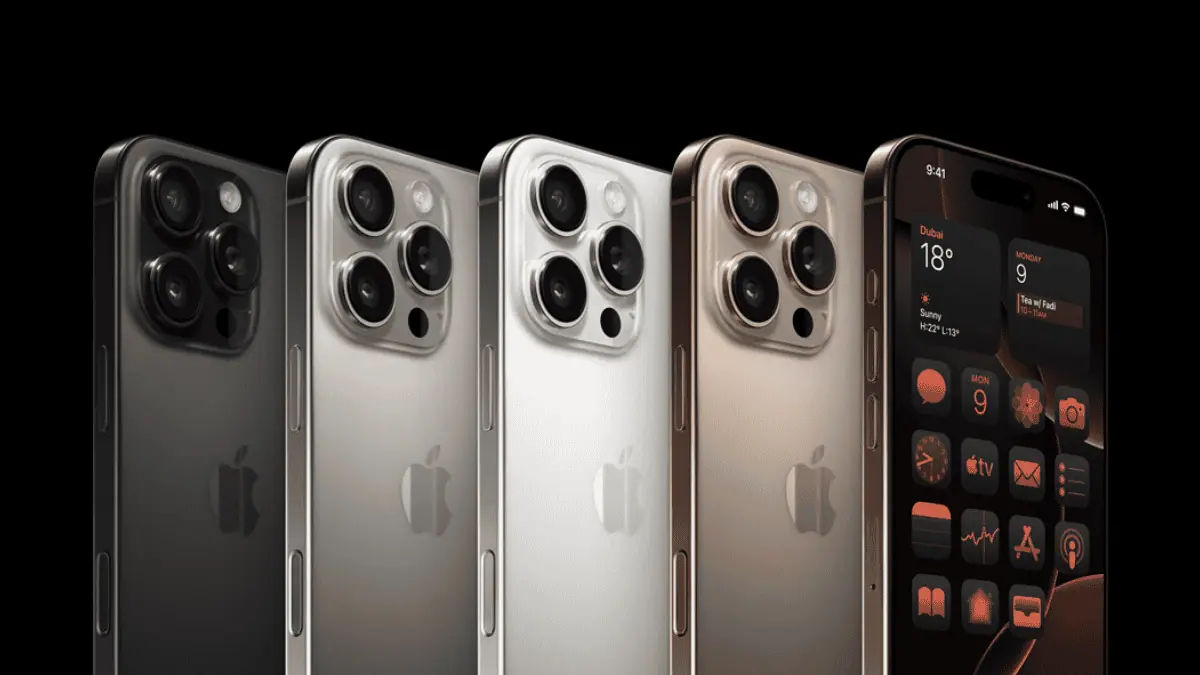


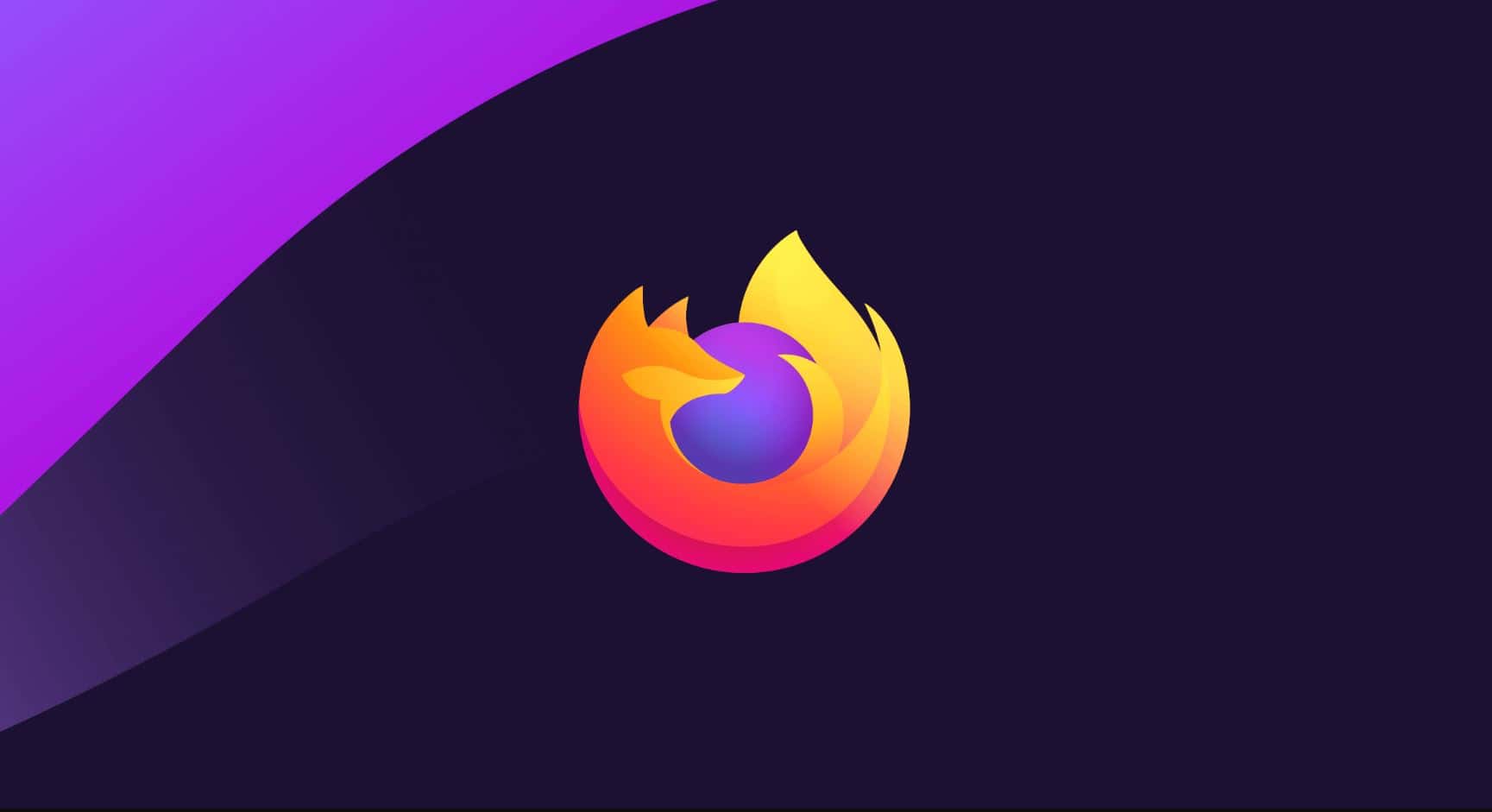
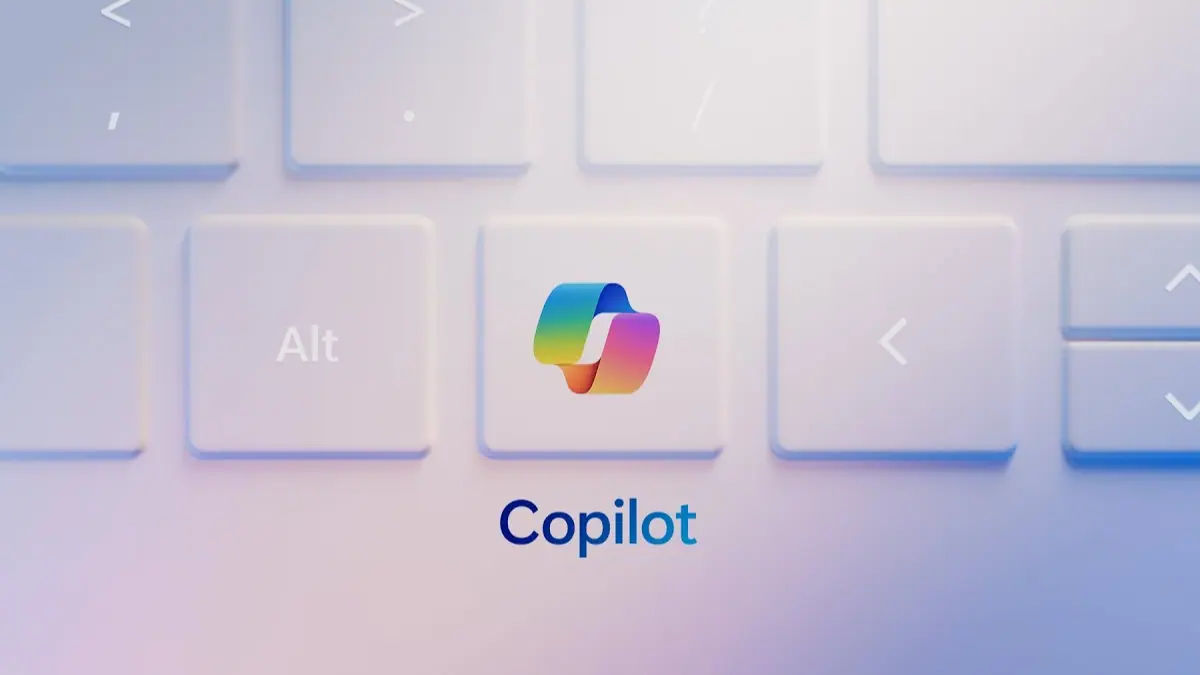
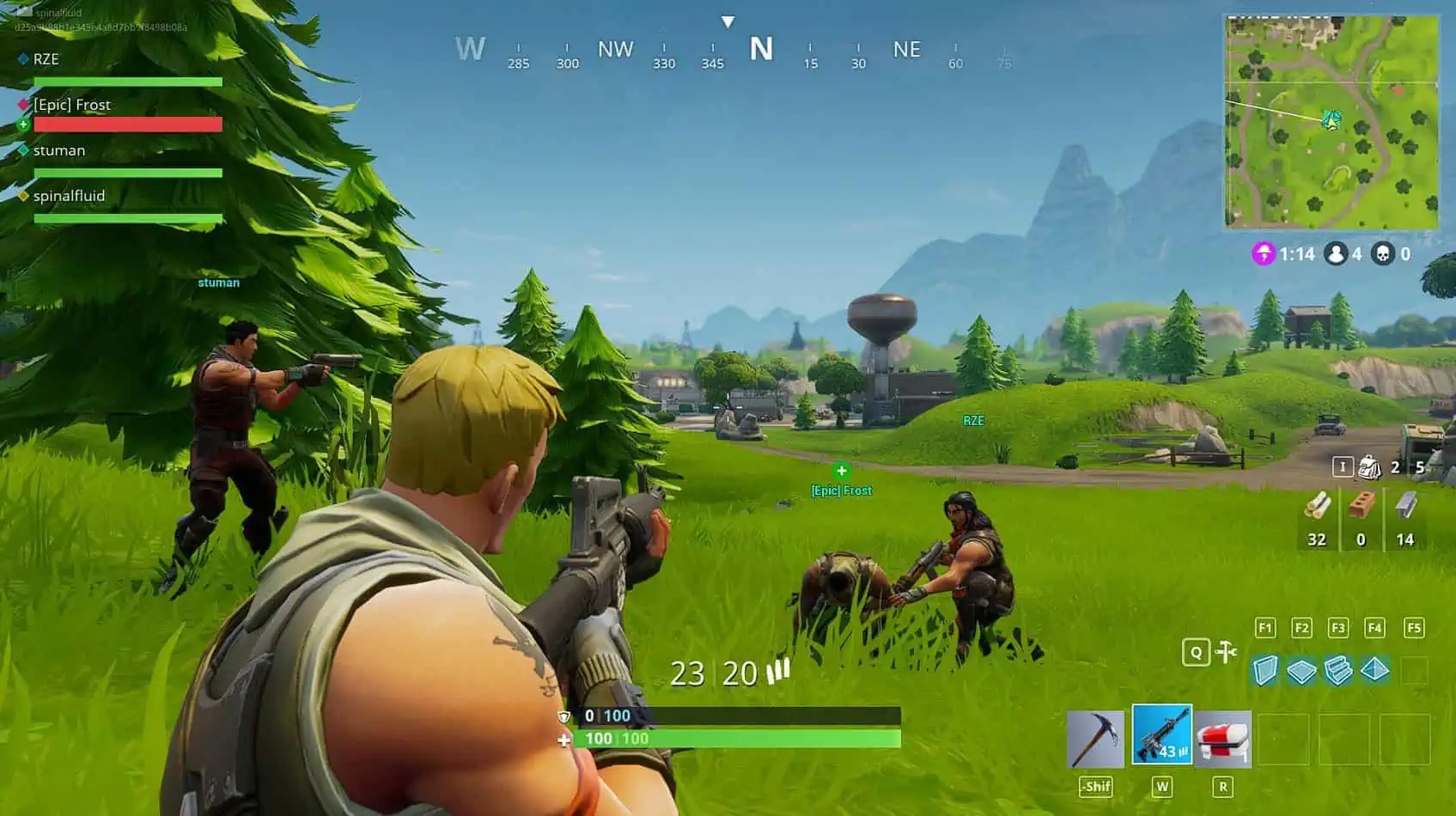

User forum
0 messages